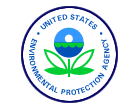Innovative
Technology Verification Report
Field Measurement
Technologies for
Total Petroleum Hydrocarbons in Soil
Horiba
Instruments Incorporated
OCMA-350 Oil Content Analyzer
This document is available in the Adobe Acrobat PDF Format.
Click here for information
about Portable Document File (PDF) Formats.
or
Click here
to directly download the Acrobat Reader.
(To view the PDF, it is recommended
that you use the latest Acrobat Reader)
Innovative Technology Verification Report
Horiba Instruments Incorporated
OCMA-350 Oil Content Analyzer
EPA 600/R-01/089
September 2001
The OCMA-350 Oil Content Analyzer (OCMA-350) developed by Horiba Instruments
Incorporated
(Horiba), was demonstrated under the U.S. Environmental Protection Agency
Superfund Innovative
Technology Evaluation Program in June 2000 at the Navy Base Ventura County
site in Port
Hueneme, California. The purpose of the demonstration was to collect reliable
performance and cost
data for the OCMA-350 and six other field measurement devices for total
petroleum hydrocarbons
(TPH) in soil. In addition to assessing ease of device operation, the
key objectives of the
demonstration included determining the (1) method detection limit, (2)
accuracy and precision, (3)
effects of interferents and soil moisture content on TPH measurement,
(4) sample throughput, and
(5) TPH measurement costs for each device. The demonstration involved
analysis of both
performance evaluation samples and environmental samples collected in
five areas contaminated
with gasoline, diesel, lubricating oil, or other petroleum products. The
performance and cost results
for a given field measurement device were compared to those for an off-site
laboratory reference
method, “Test Methods for Evaluating Solid Waste” (SW-846) Method
8015B (modified). During
the demonstration, Horiba required 46 hours, 15 minutes, for TPH measurement
of 199 samples and
9 extract duplicates. The TPH measurement costs for these samples were
estimated to be $15,750
for the OCMA-350 compared to $42,050 for the reference method. The method
detection limits
were determined to be 15.2 and 4.79 milligrams per kilogram for the OCMA-350
and reference
method, respectively. During the demonstration, the OCMA-350 exhibited
good precision and
sensitivity to interferents that are petroleum hydrocarbons (methyl-tert-butyl
ether and Stoddard
solvent). However, the OCMA-350 TPH results (1) did not compare well with
the reference method
results for the performance evaluation samples and (2) were significantly
impacted by soil moisture
content and by turpentine, an interferent that is not a petroleum hydrocarbon.
In addition, some of
the items in the OCMA-350 made the TPH measurement procedure less simple
and more timeconsuming
during the demonstration. Collectively, the demonstration findings indicated
that the
OCMA-350 may be considered for TPH screening purposes; however, the user
should exercise
caution when considering the device for a field TPH measurement application
requiring definitive
results.
Back
to SITE Reports
Posted December 03, 2001
Jesse Armstrong
Computer Sciences Corporation
|

